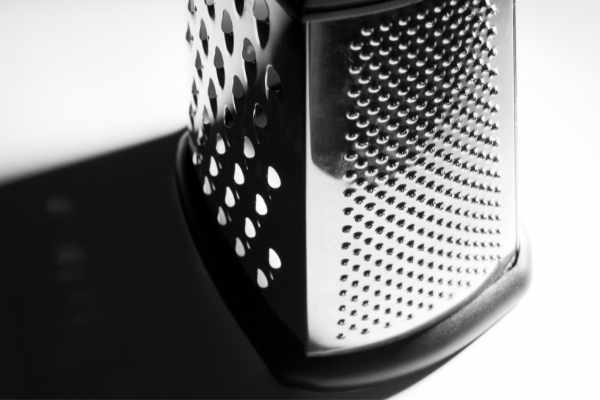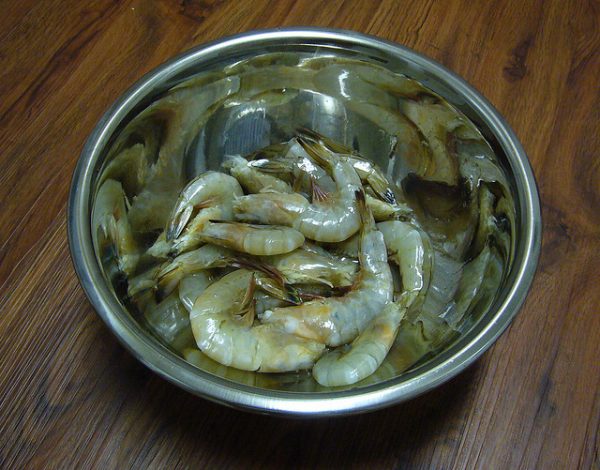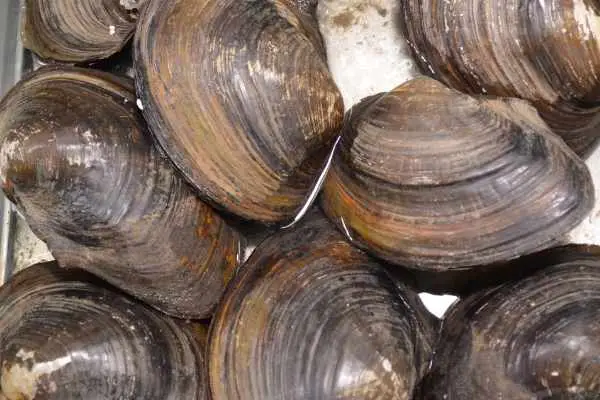Have you ever wondered if you could make your own saltwater fish food? Think about it: no need to contemplate which commercial food to pick up from the store. And you retain full control over all the ingredients. If the thought’s ever passed through your mind, this is the post for you. And before you fret over a complicated recipe with dozens of ingredients – don’t worry. This is the EASIEST saltwater fish food recipe you’ll ever encounter.
Table of Contents: Easiest DIY Saltwater Fish Food
What makes DIY saltwater fish food so popular? You retain control of the entire process. From start to finish, you get to handle every step. And that means you get to decide what your saltwater aquarium fish and invertebrates will get to dine on. It’s fun – once you learn the process. This easy recipe will give you a taste of the freedom you can expect. And after you get the knack, you can move on to more complex recipes (or, you know, stick to the simple basics).
- DIY Saltwater Fish Food
- Ingredients
- Freezing
- Feeding Saltwater Fish Food
- Cleaning
- The Next Saltwater Fish Food Step
- For More Information
DIY Saltwater Fish Food
If you’ve taken a peek at DIY fish food recipes, you might feel overwhelmed. There are quite a few complicated, in-depth suggestions out there. And some aquarists get pretty detailed about vitamins and other supplements. But it’s easier than you think to make highly nutritious food for the fish in your saltwater aquarium. You just need the right ingredients and handling of said items.
Before investing a lot of time and energy into a 20-item recipe, I encourage you to start simple. Try this recipe for a simple DIY saltwater fish food (seriously, it’s the easiest option you’ll find out there). Calling it a “recipe” suggests more complications than you’ll actually find. Because you don’t need much to get started (put away that food processer).
All you need to start is a freezer, a cheese grater (one that shreds tiny pieces, not big fat pieces), and some seafood. Got that much? Good, let’s get started.

Ingredients
This saltwater fish food recipe starts with regular table shrimp. You got it, the kind you dunk in cocktail sauce and eat. Why shrimp? Easy:
- Most of the carnivorous (meat-eating) fish in your tank enjoy a shrimp cocktail (figuratively speaking – we’re going to omit that cocktail sauce)
- Shrimp are readily available in most supermarkets
- You can buy a few shrimp (which will last longer than you think) for pretty cheap
If your store has a seafood counter, ask the attendant to weigh out a few shrimp. You don’t need more than that, and it’ll cost you the loose change in your pocket. Buy raw shrimp if you can find them. Cooked shrimp will do the trick, too, but your fish will lose some of the nutrients available in the raw form.
When you get the shrimp home, peel off the shell. Then “ball them up” as best you can, place them in a sealable plastic bag, and pop them into the freezer.

Freezing
Why in the world would you put your freshly-purchased, deshelled shrimp in the freezer? Freezing your soon-to-be saltwater fish food is an important step. That subzero temperature accomplished a few important steps for you:
- Kills parasites and pathogens. If the shrimp you purchased were fresh (never frozen), they probably harbor microscopic pests. A reasonable period of time in the freezer will kill anything you wouldn’t want to unintentionally add to your tank.
- Keeps the food “fresh” longer. I know it’s not really fresh by definition – it’s frozen. But I think you know what I mean. The shrimp last much longer in the freezer without spoiling.
- Ease of handling. If you “ball up” the shrimp before you freeze them, they’ll end up nice and easy to handle when you’re ready to feed your fish.
Taking the shell does part of the work, but those icy conditions take things the rest of the way. You’re not using preservatives (unwanted chemicals) or other techniques to treat your saltwater fish food. The freezing allows you to supply a healthy source of food. And it’s a simple part of the equation. A week in your freezer is enough to eliminate the worst of the microbes. Then you can move on to the next phase.
Feeding Saltwater Fish Food
Now your shrimp are safe for consumption (yours or your aquariums – I’m just throwing that out there). You want to set up a CLEAN space to work in your kitchen. After all, the last thing you want is to go through that freezing process and end up with bacteria hitching a ride from your counter. So wipe everything down and rinse it thoroughly.
Now it’s time to prepare your saltwater fish food. Take your shrimp “ball” out of the freezer. Shave slivers onto a plate or bowl with a FINE mesh cheese grater (the smaller, the better) or even a lemon zester. You only want to produce as much fish food as you need to feed so you don’t waste any. Once you’re finished, return the ball to its bag. Now it’s time to thaw that saltwater fish food before adding it to the tank. (No one likes frozen food – not even fish)
I keep a small cup that I use EXCLUSIVELY for thawing frozen foods near my aquarium. (Your family will NOT appreciate using a cup that tastes like shrimp) Even when I feed commercial frozen foods – like Hikari Mysis shrimp cubes – I drop the frozen stuff in that cup and fill it with a little warm water. You DON’T want to use your tank’s water. Sure, it’s warm, but it’s also full of bacteria – not all of which is good. Considering the work you did to make this food healthy, you don’t want to trip at the finish line.
Once your saltwater fish food thaws, stir the contents of the cup a little (a gentle swirling motion works well). Then pour (very SLOWLY) the cup into the aquarium. Take frequent pauses to observe your fish and let them get used to their new food. You want to see them swooping over to snap up those pieces of shrimp – without spitting it out. If no one shows any interest, you may want to consider a different protein source.

Cleaning
Now that your fish have consumed their saltwater fish food, it’s time to address the kitchen and the mess you made. Ideally, before you even walk over to the tank, you should return the unused ball of frozen shrimp to the freezer. You don’t want it to start thawing (that invites potential problems – say, those microbes you’re working to avoid).
You also want to wash and dry the plate, cheese grater, and anything else that came into contact with the raw shrimp. Frozen or not, it’s a protein, and it can leave gross bacteria on those surfaces. That includes your hands – BEFORE you decide to have a snack or touch your face. The odds that you’ll contract a disease may not be high, but you don’t want to roll the dice. And as you may use different proteins for your saltwater fish foods, you could end up in bigger trouble if you skip this step.
In fact, I recommend washing and drying the cheese grater right away and putting it back where you found it. Better yet, consider purchasing one that’s strictly for your fish food “business” so no one accidentally spots it out on the counter and grabs it while you’re feeding the fish.
The Next Saltwater Fish Food Step
Voila! Wasn’t that easy? (It’s probably TOO easy when you get down to it) I’ve personally had success feeding my fish this way, But there have been occasions where the fish were reluctant to eat my saltwater fish food offering. If you find the same problem, start by feeding small amounts. And be careful to remove any uneaten food to avoid fouling the tank water. Also, make sure your saltwater fish food is properly thawed before feeding. The temperature of the food DOES impact appetite.

Building on Success
If your fish enjoyed your first foray into the DIY saltwater fish food “business,” consider branching out. As you can see, you don’t need a ton of protein to get started. This method ISN’T expensive, and it’s easy to replicate. Just about any seafood will work, so you can buy whatever’s on sale. You ONLY want to use saltwater fish and shellfish, though. They provide the most nutrition:
- Clams
- Mussels
- Scallops
- Oysters
- “Catch 0f the day” fish meat
Once you have a feel for the kinds of foods your fish prefer, buy a few different types and ball them together. Then you can shave off some from a different section every day. Then you’ll feed your tank with a variety of nutritious foods.
And if you want to get fancy? Add some nori or a vitamin supplement like SELCON for an added boost of nutrition.
If you want to stick to the easy side of things, though, simply freezing shrimp, scallops, or clams and using a cheese grater (or lemon zester) to create fine pieces works to create DIY saltwater fish food!
For More Information
Feel those DIY creative juices flowing? It’s not a surprise. Making your own saltwater fish food gets addictive once you start. And knowing precisely what’s in that meal you’re pouring into a tank eases plenty of burdens. But if you need a little more prodding, you’ll find some more feeding information here.
If you’re SERIOUS about saltwater fish food, then grab some popcorn and a notebook. This YouTube video will walk you through EVERYTHING you could possibly want to know:
And if you want one (other) simple recipe, this YouTube video doesn’t require quite as much of your undivided attention:
What about other ways to feed your aquarium fish and invertebrates? If you have interest, you can find the topic:
Leave a Reply